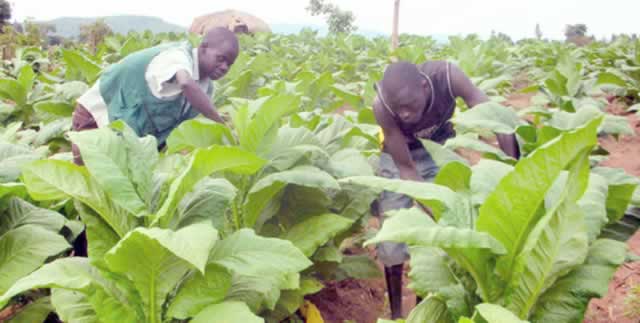Farmers must not expect perpetual support

Nelson Masukume
THE land reform programme, championed by the Zanu-PF-led government since 2000, rightfully sought, and managed, to correct land ownership imbalances caused by almost a century of white colonialism.
During the colonial era, vast tracts of fertile land belonged to a handful whites while the majority of landless blacks were crammed in the infertile, tsetse-infested barren sands in the communal areas, or tribal trust lands.
By 1914, white settlers, numbering 23,730 owned 19,032,320 acres of land while an estimated 752,000 Africans occupied a total of 21, 390, 080 acres of land.
By 1930 land available for African use was now 28,591,606 acres or 29,8 percent for a population estimated at 1,081,000.
At the same time a European settler population of about 50,000 was allocated 51 percent of the best land.
At Independence, about 15 million hectares was held by large-scale white commercial farmers, numbering around 6,000 white farmers.
While whites held about 70 percent of the land, millions of blacks owned less than 30 percent.
It is a historical fact that before 2000, blacks were denied room to produce crops on a commercial scale since they were curtailed by the small and barren soils they inhabited.
All their labour was exploited by the whites who made them cheap farm labourers who earned meagre salaries for their hard labour.
However, the three phases of land redistribution have benefited 238,989 formerly landless blacks who have been resettled on 14,5 million hectares of land that used to be held by whites.
The first phase started in 1980 to 1998, followed by the second one from 1998 to 2000 and then the revolutionary fast-track land reform and redistribution from 2000 to date.
After repossessing the land, the Zanu-PF government promulgated farmer support schemes that saw many farmers receive farm implements such as ploughs, tractors, harrows, combine harvesters, seed maize and fertiliser.
The noble objective was to assist all new farmers to put their act together and produce crops for both domestic and commercial purposes.
It was the wish of the government to have black farmers substitute the greedy white farmers.
Black farmers were expected to produce enough crops and maintain the crop production volumes similar to those achieved by the whites and even produce more and better yields per unit area.
Despite the government support, food production in the country has significantly dropped and the country supplements its domestic production with imports.
Last year, the government imported maize from Zambia and recently it was announced that more is being imported from South Africa.
At around the same time, the Grain Millers Association of Zimbabwe lamented the shortage of domestically grown flour and the increasing need for imports.
Reasons why the country is failing to meet its food needs are many.
The biggest one is that we have experienced recurrent droughts over the past decade, since the land reforms.
The other is that farmers who were allocated land over the past few years are still getting their footing. Many of them still do not have the right machinery and equipment to work the land.
Another big factor is that many of them, particularly those in high rainfall zones in Mashonaland East, Mashonaland West, Mashonaland Central and Manicaland appear to have shifted towards growing cash crops, particularly tobacco, which earns them more money.
Indeed, tobacco has become an area where blacks are demonstrating their capacity to produce, with production and even yields improving greatly over the past decade.
After the expected decline in 2000 when the land reforms were launched, production, now dominated by blacks, has been rising sharply every season over the past five years or so.
For instance, farmers produced 123 million kilogrammes of the golden leaf in 2010.
In the 2012 season, the government projected that up to 150 million kilogrammes would be realised.
The projected figure was just about 50 million kilogrammes less than the record achieved by white tobacco farmers around 1999.
Similar growth is being seen in sugarcane, cotton and maize production. Britain and her allies would not admit in public that the land reform programme is a success.
Despite British criticism, the land reform programme has succeeded and many countries must learn from us. Already, studies, many of them done by white scholars at British universities are admitting that the land reform programme has been a success.
Prominent scholar, Professor Ian Scoones who has studied the land redistribution exercise since 2000 focusing on Masvingo, endorsed the revolutionary programme and its success.
“What we found was not what we expected,” he said while launching his book, Zimbabwe’s Land Reform: Myths and Realities.
“It contradicted the overwhelmingly negative images of land reform presented in the media, and indeed in much academic and policy commentary.
“Problems, failures and abuses were identified for sure, but the overarching story was much more positive: the realities on the ground did not match the myths so often perpetuated in wider debate. Aggregate production of small grains has exploded; increasing by 163 percent compared to 1990s averages. Edible dry bean production has expanded even more, up 282 percent. Cotton production has increased slightly, up 13 percent on average. The agricultural sector has certainly been transformed, and there are major problems in certain areas, but it certainly has not collapsed.”
Our new farmers have achieved all this with limited government support.
What can they achieve if more support is availed? About $1 billion is being invested in the sector this season.
They must be assisted on the best agricultural practices to feed the nation. The country has enough land, resources and expertise to sustain its agricultural production. More action than words is needed. Agricultural policy must interrogate the capacity of farmers and put in place goals and results-oriented frameworks that bring meaningful production.
Zimbabwe as noted above has the potential to grow and regain its status as the bread basket of Southern Africa.
At the same time, I think it is very important that, while we recognise that farmers need more time on the land, they could do the country a lot of good if they let go the “new farmer.”
They must not expect perpetual support from the government. They must prove that they have the capacity. After all black farmers are the ones who made large white farms produce through their labour and expertise. Whites were never on the farms. It is black labourers who were on the ground to do the job. They must do it now that they own the land.
The government has announced that there would be a shift in focus of the support it gives to the agriculture sector.
Minister of Agriculture, Mechanisation and Irrigation Development, Dr Joseph Made said the 2013/14 season was the last season where government would provide direct input support to farmers as focus would now turn to subsidising manufacturers to lower input costs.
“For a long time we have been saying subsidising the manufacturers is the preferred form because it assists us as we would not to be involved in the day to day allocation of inputs to farmers.
“If we subsidise the manufacturers of inputs to lower the cost of production, the farmers will be able to purchase the inputs on their own. (Also) if the farmers are paid timeously they will at least be able to purchase their own inputs and that is how farming should be,” said Minister Made.
This will help plug possible abuse of inputs by some of our farmers while helping them to shed the mentality that government support is always going to be there.










Comments